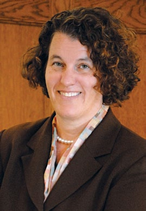
Whether we believe in charter schools or harbor our reservations, the fact remains that they're a vital part of our nation's education landscape. Today, some 5,000 charters across America enroll 1.6 million children, and those numbers are increasing steadily. With that kind of scale, it's critical to understand the effects of charters on the educational outcomes of the children they serve. Which charter school models produce the best outcomes for students? Which policies and programs do these highly effective charters employ?
Every day, news headlines across the nation highlight charter school controversies. Contentious laws in some states now permit 51 percent of parents in a low-performing public school to demand its conversion to a charter. Residents are up in arms about a newly proposed charter school, fearing it will draw students and funding away from the area's long-standing elementary. Charter schools are spending way more on administrative expenses than their traditional public counterparts and, on average, don't seem to be yielding better educational returns. The list goes on.
Along with the controversies, we hear more and more about the successes. Waiting for Superman, the acclaimed documentary directed by Davis Guggenheim, made a national splash last year. Critics of the film, however, accused it of oversimplifying the effect of charter schools, focusing exclusively on the most successful urban charters and the least successful traditional public schools, and failing to illuminate why some charters are yielding such incredible results.
"We need another movie," wrote critic David Denby of The New Yorker, "one that shows us why some charter schools work and others don't." That's a sequel Ford School faculty Susan M. Dynarski and Brian A. Jacob are likely to inform.
 |
|
Susan M. Dynarski |
Forgive us if we begin with a definition, but there's a great deal of confusion about what a charter school is, and what it's not. Charter schools are not private or forprofit schools, and they aren't exclusive. By law, charters aren't permitted to turn students away based on race, socioeconomic status, or previous academic performance. Charter schools are, quite simply, public schools freed from some of the regulations that guide traditional publics. In short, in exchange for a limited charter (one that can be revoked if they fail to meet performance expectations), charters have been given more freedom to experiment, to craft their own curricula, and to test new policies and procedures for school administration, student support, and academic expectations.
It can't be denied that sometimes these experiments fail, and charters are revoked. In Michigan, for example, 42 charter schools have been closed over the last 16 years. Sometimes, however, the latitude charters have when it comes to experimentation can yield incredible results. Case in point: urban, "no excuses" charter schools in Boston that are yielding, in Dynarski's words, "absolutely enormous effects—large enough to close the black-white test score gap in three years."
What's the magic behind these charter school successes? By taking advantage of a federally mandated lottery system—one that was specifically designed to eliminate bias when selecting new students at oversubscribed charter schools—education policy researchers like Dynarski and Jacob are hoping to find out.
By federal law, oversubscribed charter schools across the nation are required to select their students randomly. Just as dramatized in Waiting for Superman, school administrators are required to do this in a public forum, inviting parents and community members to observe as they draw names or numbers from boxes or ping pong balls from cages.
 |
|
Brian A. Jacob |
"Ultimately, it's that chance, that flip of the coin, that makes a near-perfect laboratory for studying the effects of charter schools on student outcomes," says Dynarski. After all, given a large enough sample size in which chance is the only factor that separates a charter school student from her traditional public counterpart, you've eliminated everything but the treatment: charter education.
Last year, Dynarski and Jacob received a grant from the Smith Richardson Foundation to track the outcomes of tens of thousands of students who enrolled in charter school lotteries throughout the state of Michigan. Over the next two years, they'll study the outcomes of the winners and losers of those lotteries, looking specifically at academic achievement, high school graduation, and college enrollment. They'll strip the names, so each individual student and his school remains anonymous. And they'll analyze the results, in hopes of identifying the state's most successful charters as measured by student academic performance and educational attainment.
In addition, Jacob and Dynarski will study the charter schools themselves. They'll ascertain each school's focus—whether it's college prep, arts education, language skills, or character development. They'll study the length of their school day, the length of their school year, and the size of their classes. They'll look at programs and policies regarding parental involvement, teacher training, curriculum development, student support, and more. Then, with all of that data in hand, Dynarski and Jacob will attempt to tease out the most effective school practices. For example, if they discover that the charter schools with the greatest impact are using a particular curriculum, mandating a longer school day, or controlling class size, they'll disseminate that information broadly. After all, the most effective practices are likely to be of interest to all public schools—charter or traditional.
About 85 percent of Michigan's students graduate from high school, and 71 percent of those graduates go to college, but a much lower share of them actually finish college.
While charter school research like this is of interest across the nation, and indeed, is being conducted across the nation, it just so happens that Michigan is a great place to study charters. With 242 charters enrolling 110,000 students (about 7 percent of the state's K-12 population), Michigan has one of the largest and fastest growing charter populations in the country. When Dynarski conducted a similar study with colleagues in Massachusetts, only 21 of the state's 86 middle and high school charter schools had sufficient lottery data to be included in her research. Three months into the Michigan study, in comparison, Dynarski and Jacob have identified more than twice that number, and are only half way through the state's charter schools.
Perhaps even more exciting is an aspect of the Michigan study that no other researchers have attempted at this scale: a focus on college-going and completion. Because Jacob and Dynarski have worked extensively with Michigan's education community to construct a powerful database to track and research postsecondary education outcomes, the pair hope to incorporate statewide postsecondary data that would allow them to understand what percentage of charter school graduates are going on to college, which two- or four-year institutions they're attending, which degrees they're pursuing, how they're faring academically, and whether or not they're graduating.
About 85 percent of Michigan's students graduate from high school, and 71 percent of those graduates go to college, but a much lower share of them actually finish college, explains Dynarski. "Only about half the kids who go to college graduate, so decreasing that rate of dropout and improving completion rates is pretty important." By understanding which charter school models are most successful, and the policies and procedures these charter schools are employing, the study should uncover useful data on what's working best.
 |
Dynarski and Jacob have employed one of their star alumni, 2010 Staebler Education Fund Intern Mahima Mahadevan (MPP '11), to manage the charter school research project. A Michigan native and recent Ford School graduate, Mahadevan is visiting each of Michigan's 242 charter schools to discuss the study, understand each school's enrollment trends and lottery data, and collect relevant records. Since mid-July, when Mahadevan began her site visits, her 2007 Chevy Cobalt has put on 6,171 miles in the effort.
On a beautiful fall day, Mahadevan visited the University Preparatory Academy in downtown Detroit for a meeting with the non-profit charter management organization's new CEO, Lesley Redwine. "Charter schools have been around for 15 years, and they've had the freedom to do things differently," Mahadevan explained. "Now it's time to take stock of that, and see what we can find out about which practices are working."
Redwine, a Detroit native and University of Michigan alumna ('93), is game. Recruited to the charter management organization from Achievement First, another successful charter group in New York City, Redwine explains why she returned to Detroit. "My investment, and why I came here, is to strengthen the schools and to really make them more responsive so our kids can go to more competitive colleges and universities."
After working out a way to minimize staff time in gathering the lottery data, Redwine peppers Mahadevan with questions about the study, and questions she hopes the study will answer. "Hearing from other charters about who's doing what, how they're doing it, and what's working? I'm very, very interested," she says. "We have to really understand how we can make our schools better." It's a hope that Mahadevan has heard again and again, and one that Jacob and Dynarski mean to address.
"We're really most interested in looking not simply at the overall impact of charter schools, but in learning more about the policies and practices that are responsible for the positive impact," explains Jacob."That's something that can inform things going forward, rather than just making an evaluation of what's happened in the past."
Susan Dynarski is Associate Professor of Public Policy at the Ford School and Associate Professor of Education at the School of Education. Brian Jacob is the Walter H. Annenberg Professor of Education Policy at the Ford School.
Written by Erin Spanier for State & Hill, the magazine of the Gerald R. Ford School of Public Policy.
Below is a formatted version of this article from State & Hill, the magazine of the Ford School. View the entire Winter 2012 State & Hill here.